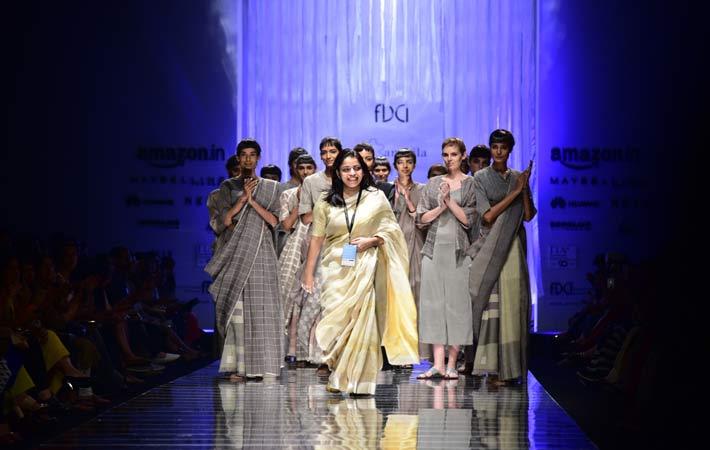Fashion with sustainable textiles has a wide scope

Sustainable textiles is paving its own way in the fashion industry. There is no dearth for innovation while working on sustainability textiles, according to fashion designer Anavila Misra, well known for making organic saris that are also sustainable while being trendy at the same time. Misra is famous for weaving textiles with various organic yarns in natural dyes.
Since the beginning of her journey as a fashion designer in a corporate firm, Misra has always wanted to work with the traditional medium. Her desire to work with the handloom industry was the motivation to work in a craft cluster project as a consultant and design studio manager. “It was a detailed project focused on cluster development in five different states. The project was intended to create sustainable means of employment while taking into consideration the artisans’ skills. Working with the handloom community inspired me to work with handwovens,” said Misra, whose efforts in reviving traditional techniques have contributed considerably to employment generation for weavers across the country.
Brand ‘Anavila’ is into creation of sustainable saris. “In India, quite a large number of women wear saris. Further, it is a challenge to come up with a sari collection that is young as well as contemporary. Working with organic yarns tests your ability as a designer,” said Anavila, whose works are mostly linen-based. “Linen is a casual-looking fibre, but is luxurious as it is good for the skin, besides being comfortable. We work only with natural yarns. Nearly 80 per cent of our production is in linen, cotton, organic cotton and natural coloured cotton. Sometimes, we also use silk to make saris. However, we use silk after blending it with either linen or cotton. We prefer natural dyes, but due to environmental hazards we resort to artificial ones. We use only those artificial dyes that harm neither the weavers nor those processing the dyes,” Misra told Fibre2Fashion.
The sustainable clothing label is famous for saris for casualwear, formalwear, dailywear and partywear. “We have to come up with sustainable wears while maintaining our brand. When you start working with one yarn, linen, and one garment, sari, the scope of permutation and combination gets limited. It requires thorough research to come up with trendy yet elegant and creative sustainable saris,” said Misra.
On the scope of sustainable fashion, she said, “Sustainable textiles have become a trend today. Lakme Fashion Week summer/resort 2017 had dedicated an entire day to textiles. Same was the case with Amazon India Fashion Week with a show promoting craft and clusters. Sustainable fashion has a very bright future. Gradually, apparel stores have also begun encouraging events around sustainable textiles. Sustainability has a very positive future.” (RR)
Click here to read the complete interview
Fibre2Fashion News Desk – India
































-Ltd..jpg?tr=w-120,h-60,c-at_max,cm-pad_resize,bg-ffffff)





.jpg?tr=w-120,h-60,c-at_max,cm-pad_resize,bg-ffffff)
.jpg?tr=w-120,h-60,c-at_max,cm-pad_resize,bg-ffffff)






